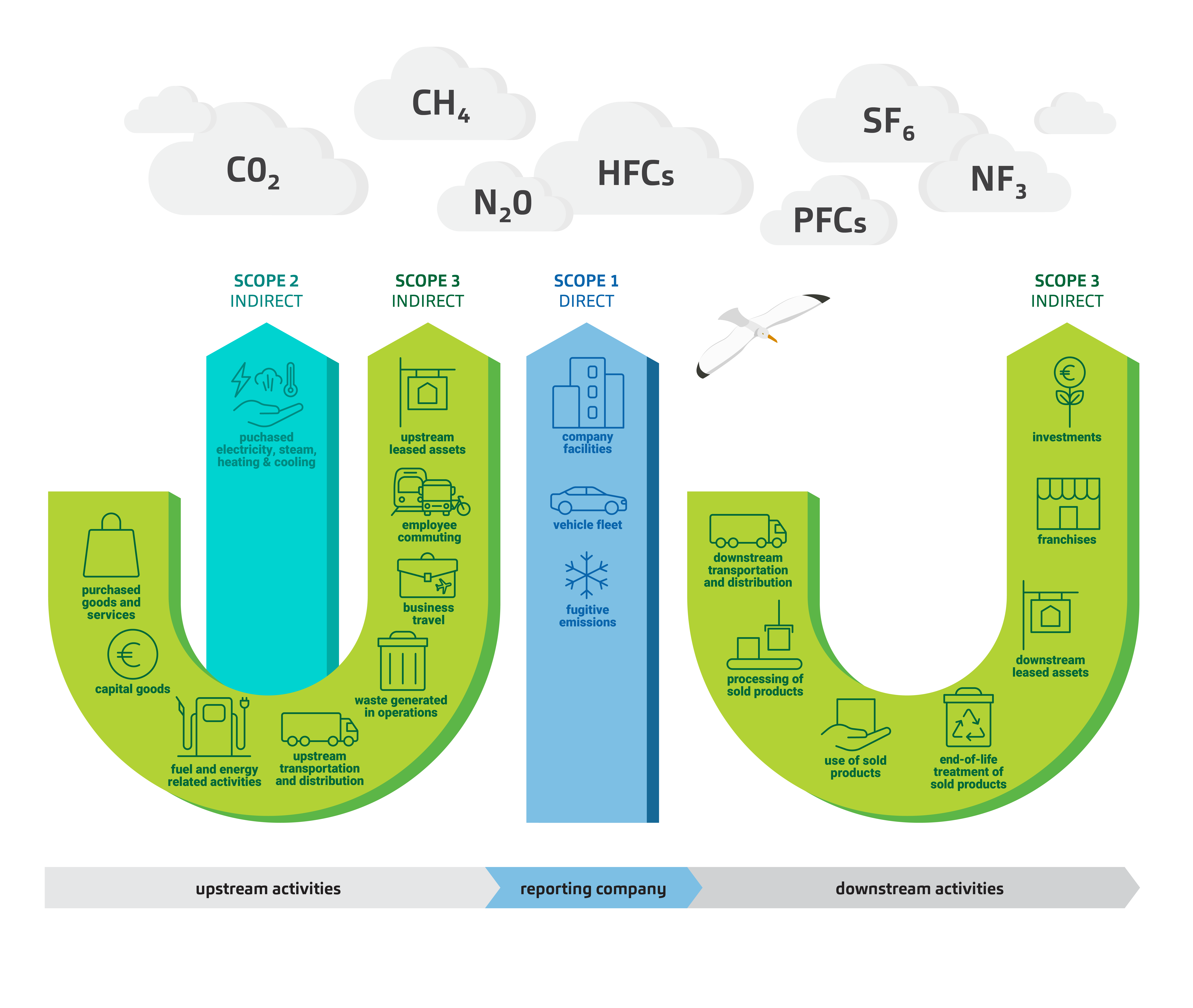Want to understand the climate impact of your business? Calculating your carbon footprint is an essential first step towards sustainability. But where do you start - and what do the different scopes actually mean? In this article, we explain what scope 1, 2 and 3 mean, what a full footprint involves, and how to calculate it. This will help you understand your emissions and your opportunities to become more sustainable.
What is the carbon footprint?
A carbon footprint is the total amount of greenhouse gases emitted to the atmosphere, such as carbon dioxide (CO2) and others. These emissions are linked to the activities of individuals, communities and organisations, among others.
An organisation’s carbon footprint shows the greenhouse gas emissions of all activities from the value chain, both direct and indirect emissions. To get a clear and structured picture of where emissions are in the value chain, greenhouse gases are divided into three scopes. This makes it easier for organisations to understand which activities have the most impact and the most effective areas to intervene to reduce emissions. We explain the scopes below:
Scope 1: emissions from sources owned or controlled by the company. These emissions come from activities such as burning fossil fuels through the use of its own vehicles, or natural gas for heating its office spaces.
Scope 2: emissions from the generation of electricity, heat and cooling consumed by the company, but not in-house. Consider electric vehicle charging stations that draw power from a fossil fuel-based electricity grid.
Scope 3: emissions from activities outside the direct control of the company, but which are related to the operations and arise from the value chain. For example, these emissions arise from the transport of your products that is provided by an external company, or the energy consumption of the end user of your product. With this, the company selects the categories that are relevant to their business activities and value chain.
Scope 3 emissions often form the largest part of the carbon footprint because this is a set that covers the entire supply chain of a product. Reducing Scope 3 emissions often requires an integrated approach in collaboration with other companies. At the same time, this also provides the opportunity to make a substantial impact by implementing measures in close cooperation with the entire value chain.
How do you calculate your carbon footprint?
The Greenhouse Gas Protocol provides companies with the most widely used standards for measuring and reporting their carbon footprint. It also helps countries and cities with guidelines and tools to track their progress towards climate goals. To calculate the carbon footprint, you go through the following steps:
Define system boundaries
Determine the range of the carbon footprint calculation. Decide which organisational units, activities and emission sources will be included in the calculation.
Collect data
Collect relevant data on suppliers, activities and expenses. Include data on all relevant activities that contribute to the carbon footprint. Consider energy consumption, transport and waste production. These data are obtained from facilities management, HR, procurement, finance departments, employees, suppliers and customers (for example using surveys).
Calculate carbon footprint
Multiply the activity data by the corresponding emission factors to calculate the total emissions for each activity. All these emissions added together give your total carbon footprint.
Report
Document and report the results of the carbon footprint calculation. Describe in as much detail as possible the methodology used, the data sources and any assumptions. Such a report helps identify hotspots and areas for improvement.
Ready to get started on your carbon footprint? Contact our experts for a consultation with no obligation. We not only help you with calculations and reporting, but also support you with strategic action plans and implementation.
The legislation and regulations in this area may be subject to change. We recommend that you discuss the potential impact of this with your Baker Tilly advisor.
Other insights
No results found
.png)
